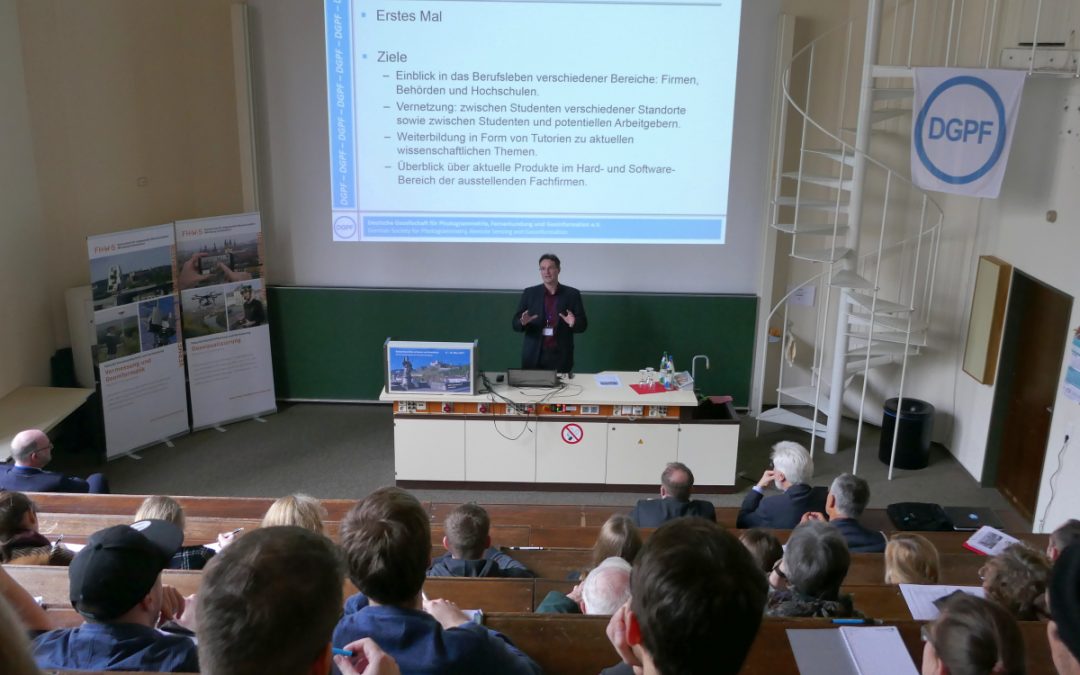This year the Germany Society of Photogrammetry and Remote Sensing (DGPF) introduced the students’ forum as an additional feature of its annual congress. The presentations during this forum were more or less informative depending on your knowledge of the subject. To be fair, there was a slight emphasis on the P for Photogrammetry in DGPF, but it was hardly recognizable. Therefore we are now quite well informed of different professional fields in photogrammetry and geodesy. There was also an exhibition of some companies related to remote sensing and photogrammetry and it was ideal to increase your supply of ball pens. Furthermore, we gained some insights about drone fabricants and suppliers for all sorts of spectrometers. Additionally, HP had brought a printer that produced many beautiful posters of aerial or satellite images, which could be taken for free. Of course we immediately acquired one for our students’ representative office. The second part of the congress encompassed applicant forums related to different topics ranging from geodesy to geo-informatics. Since we have been briefed quite thoroughly in photogrammetry, we chose to attend talks about remote sensing. The talks covered a wide range of topics; remote sensing of vegetation, different applications of SAR based earth observation and also the combination of archeology, historical aerial imagery and remote sensing. The latter was presented by one of the EAGLE lecturers Dr. Tobias Ullmann.
Since every good scientific report has a conclusion and an outlook, we have to present one too:
The four days were quite interesting and provided us an opportunity to gain broader insights in remote sensing and especially in photogrammetry (indeed a quite good opportunity regarding the fact that both subjects are sometimes presented in the same journals). Due to the slight emphasis on photogrammetry, we also gained the impression that earth observation in Germany is treated as an orphan, at least in some scientific communities. But nevertheless, we had four days full of great new input; some of it may be used for our own ideas. Most certainly, we are now somewhat hooked by the idea of going to more conferences and are on the lookout for more possibilities to do so.
Finally we like to thank Christopher Conrad for providing us with this opportunity and we hope he will be this generous, when we find another interesting conference to go to. [written by Johannes Loew]
Sources: DPFG (http://www.dgpf.de/con/jt2017/gal.html)

